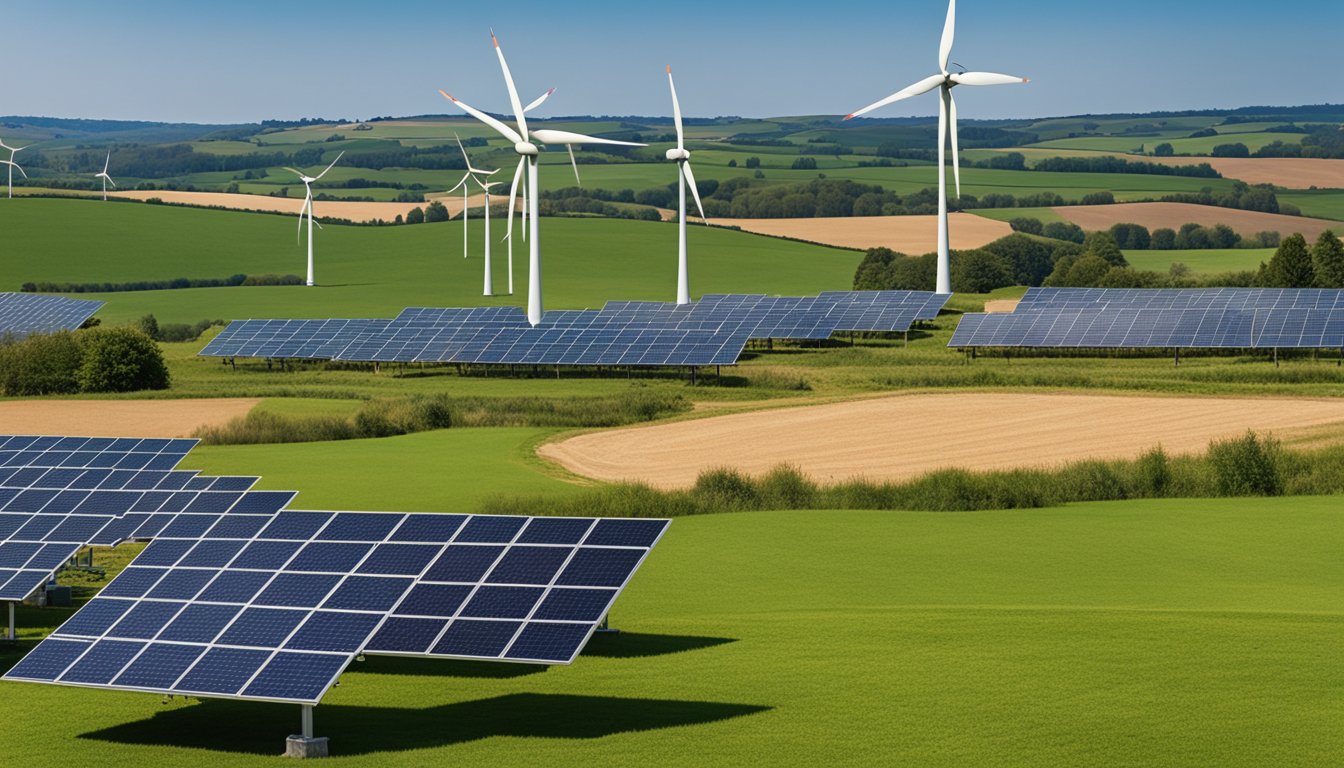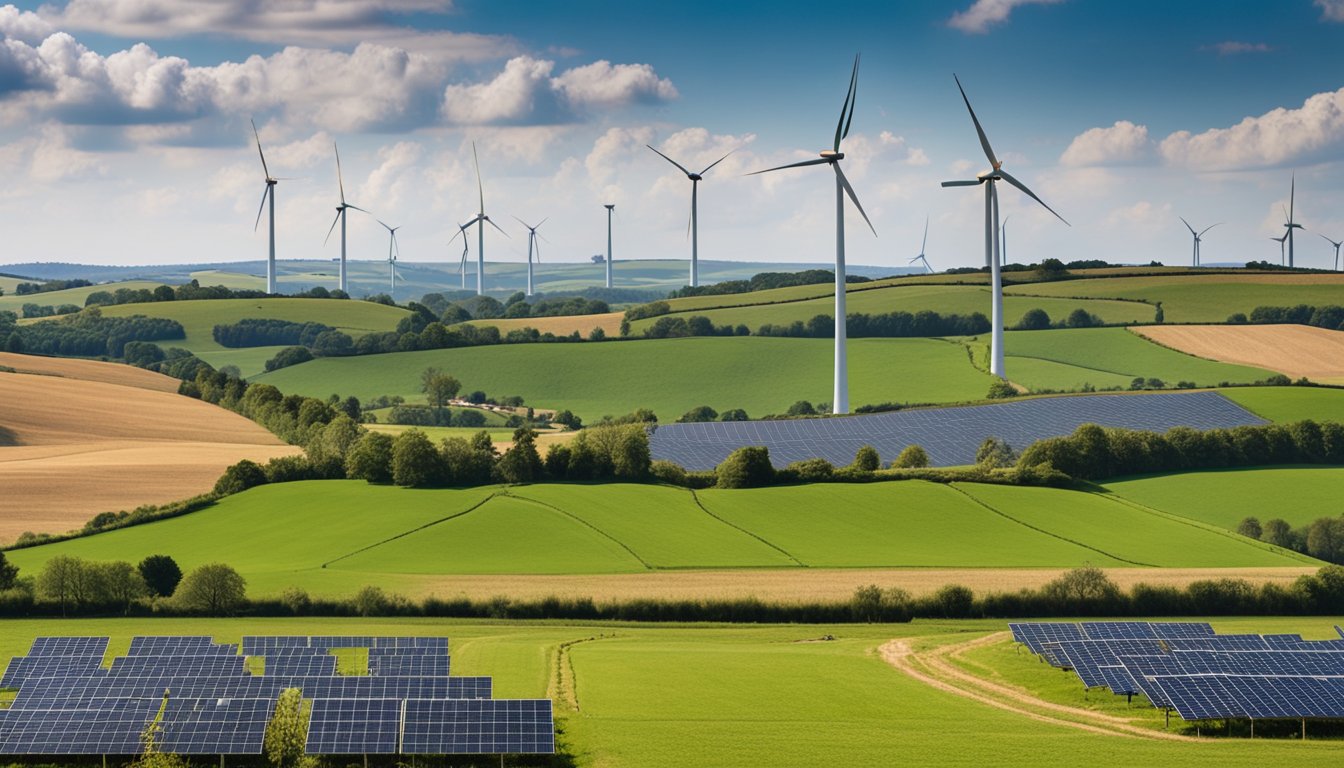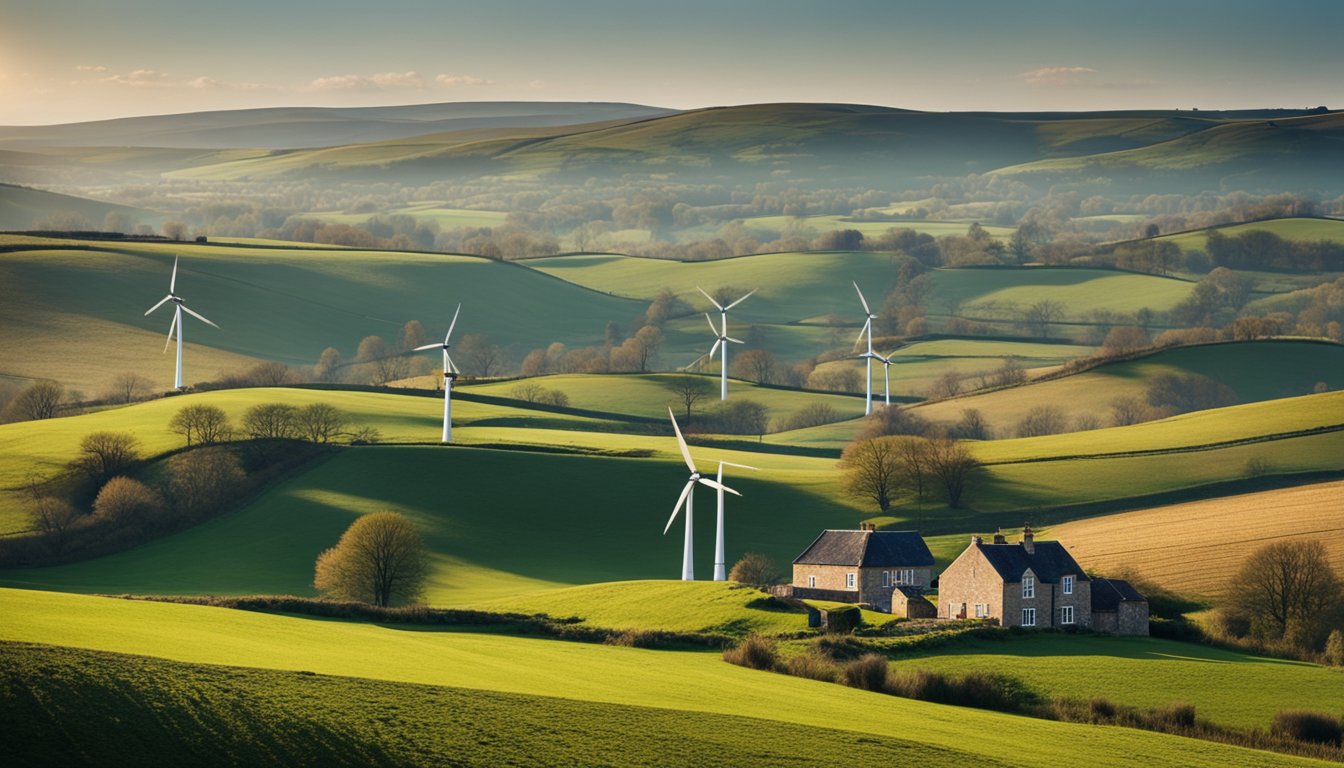Late updated: 17 Apr 2025 09:04
Written by: Oliver Bennett
Boosting Renewable Energy Adoption In Rural UK Areas: Strategies and Impact
Renewable energy is revolutionising the way we approach energy consumption, particularly in rural areas of the UK. Embracing renewable sources such as solar, wind, and biomass is vital for reducing our carbon footprint and fostering energy independence. The unique characteristics of rural areas—plentiful space and natural resources—provide an excellent setting for renewable energy projects. However, the journey towards full-scale adoption of clean energy in these regions is not without its challenges.

In rural areas, local communities play a crucial role in driving renewable energy initiatives. By utilising government grants and forming cooperative partnerships, these communities are increasingly taking charge of their energy futures. There is a growing movement towards decentralised energy systems, empowering residents to produce and manage their own power while contributing to the broader fight against climate change.
As we delve into the current landscape of renewable energy in rural settings, it becomes clear that there are both opportunities and obstacles. The promise of a cleaner, more sustainable energy future hinges on our ability to address these challenges head-on. Through innovative strategies and continued support, we can help these communities maximise their renewable energy potential.
Key Takeaways
- Renewable energy is essential for rural UK areas to achieve energy independence.
- Community-led initiatives and partnerships are pivotal in advancing clean energy adoption.
- Challenges persist, but strategic efforts can enhance rural energy transitions.
Key Strategies for Boosting Renewable Energy Adoption in Rural UK Areas
In rural UK areas, increasing renewable energy adoption involves significantly expanding the deployment of solar and wind technologies, promoting community engagement, and utilising advanced renewable technologies. These strategies can lead to enhanced energy independence, economic benefits, and a sustainable energy future.
Expanding Solar Energy Deployment
Solar energy, especially solar photovoltaic (PV) systems, plays a crucial role in reducing energy consumption and greenhouse gas emissions. To accelerate adoption, financial incentives and policy development are essential. These initiatives can make solar panels more affordable and appealing for rural communities.
It's important for us to focus on optimising the local energy infrastructure. By improving battery storage integration, we enhance energy efficiency and ensure reliable power supply even on overcast days. Converting unused land into solar farms is another strategy, providing clean energy to nearby homes.
Harnessing the Potential of Wind Power
Wind power is a pivotal component of the UK's energy strategy. Small wind turbines tailored for rural areas can transform energy production with minimal environmental impact. Establishing favourable policies and financial incentives is paramount to making wind energy viable and enticing for local stakeholders.
The potential for wind power increases when combined with modern data analytics and potential artificial intelligence applications, enabling efficient placement and operation of turbines. It is crucial for us to address issues of scalability and community acceptance, ensuring that rural residents see both the economic and environmental benefits.
Promoting Community Engagement and Local Ownership
Community engagement is vital in boosting renewable energy adoption. By empowering local communities through ownership models, we generate sustainable development and economic benefits. This approach ensures that profits remain within the community, fostering a sense of involvement and energy independence.
Engaging with communities through workshops and consultations can raise awareness about renewable energy systems. By providing education on energy efficiency and the broader impacts of climate change, we can encourage wider participation and support for renewable projects.
Utilising Advanced Renewable Technologies
Advanced renewable technologies hold significant promise for enhancing energy production and efficiency. Innovations like heat pumps and green hydrogen can complement traditional renewable sources. Integrating artificial intelligence can further optimise energy production and consumption patterns.
Adaptive technologies ensure that rural areas utilise renewable resources to their fullest potential, offering tailored solutions to energy challenges. Staying updated with technological advancements allows us to harness clean energy more effectively and ensure the sustainability of rural energy strategies.
Challenges and Opportunities for Energy Transformation in Rural Settings

In rural UK areas, transforming energy infrastructure can unlock significant benefits and present distinct challenges. Addressing grid limitations, realising economic and environmental gains, and bolstering resilience and security are central to our efforts.
Overcoming Infrastructure and Grid Limitations
Rural areas often struggle with outdated or lacking infrastructure, hindering the integration of renewable energy sources. Upgrading electricity networks is crucial to facilitate smoother integration of renewables like solar and wind power.
Initiating microgrids and smart grids are viable solutions that offer decentralised energy management, enhancing efficiency and reliability. Energy storage technologies such as batteries can further complement these systems, ensuring a consistent supply of energy even during periods of low generation.
Investment in these infrastructure upgrades not only supports decarbonisation efforts but also aligns with net zero commitments by reducing reliance on fossil fuels and cutting down CO2 emissions.
Maximising Economic and Environmental Benefits
The adoption of renewable energy in rural settings can drive economic growth and create new job opportunities. By investing in sustainable energy projects, we open pathways for community-driven initiatives that decrease energy costs and enhance affordable energy access.
Environmental benefits are equally significant. Renewable energy plays a pivotal role in reducing the carbon footprint and greenhouse gas emissions, contributing positively to climate change impacts mitigation.
Policy support and incentives are imperative to spur investment, making renewable installations not only feasible but also attractive for local businesses and homeowners, ultimately supporting the transition to a more sustainable economy.
Enhancing Resilience and Energy Security
Deploying renewable energy technologies can significantly increase energy resilience and independence in rural areas. By generating power locally, rural communities reduce their vulnerability to external energy crises and potential disruptions in energy supply.
Energy storage solutions are critical in providing backup during power outages, further ensuring constant energy security. Developing resilient energy systems also aligns with the goals of the Paris Agreement, which seeks to reduce global reliance on non-renewable energy sources.
Strengthening energy independence contributes to sustainable development, allowing us to manage resources more efficiently, thereby safeguarding the long-term vitality of rural communities.
Frequently Asked Questions

In rural UK areas, renewable energy adoption is essential for sustainable living and reducing carbon footprints. We explore incentives, government support, cost-effective technologies, integration into infrastructure, training programs, and environmental impacts.
What incentives are available for rural UK residents to switch to renewable energy sources?
Residents can benefit from the Contracts for Difference (CfD) scheme, helping to stabilise electricity prices. The Smart Export Guarantee (SEG) allows households to earn money by exporting surplus energy back to the grid. Local grants may also be available, promoting the installation of renewable technologies in homes.
How does the UK government support rural communities in the transition to sustainable energy?
The government provides funds and incentives to encourage renewable energy use in rural areas. Programmes like the Rural Community Energy Fund assist communities in starting renewable energy projects. This financial support helps overcome initial cost barriers, fostering long-term sustainability.
What are the most cost-effective renewable energy technologies for remote UK regions?
Solar panels and small-scale wind turbines are among the most cost-effective options. Biomass heating systems can also provide an efficient alternative. The choice depends on local resources and conditions, as well as initial setup costs and long-term savings they offer.
Can renewable energy systems be easily integrated into existing infrastructure in rural areas of the UK?
Many renewable systems are designed for easy integration. Solar panels can be fitted onto existing rooftops, and modern inverter technology allows seamless connection with the grid. Assessment of current infrastructure may be needed to ensure compatibility and efficiency.
What training and education programmes exist to equip rural UK communities with renewable energy skills?
Programmes provided by organisations such as the Centre for Sustainable Energy offer training sessions on renewable technologies. Colleges and community groups often run workshops and courses, aimed at enhancing skills for installation, maintenance, and management of renewable systems.
How does the installation of renewable energy sources impact the local ecosystem in the UK countryside?
Renewable installations can have varied impacts. Properly planned projects can preserve local habitats, while poorly managed ones might disrupt wildlife. Careful assessments ensure minimal environmental disruption, promoting biodiversity and sustainable development alongside energy generation.
